Hello everyone, this is Uri, the Guerrilla Poker school coach, and in today's video, we will analyze hands with high stakes, with a special focus on gangster poker from Viktor Kudinov.
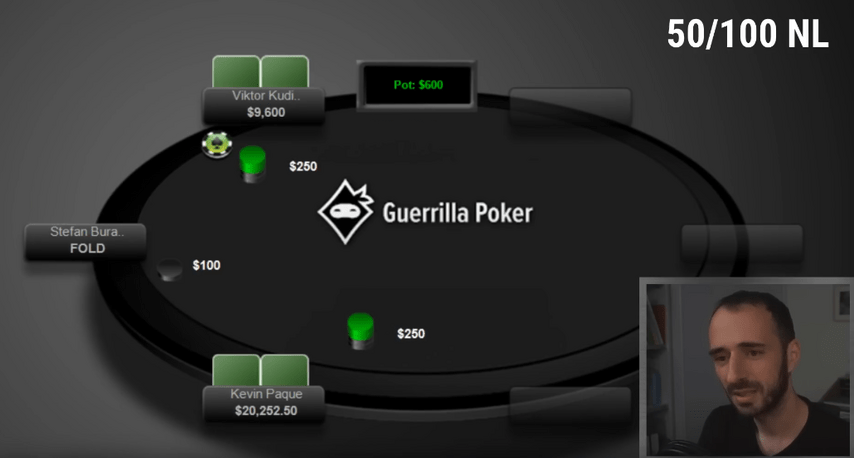
In the first hand, Viktor opens with a 2.5bb raise from the button, Kevin Paquet calls from the small blind, and Stefan Burakov folds to the BB. A few words about the preflop play. Many coaches teach you not to call raises from the small blind. This is usually true, but the strategy changes as we move up the stakes as the rake at higher stakes drops enough to allow us to call. So Kevin's line is perfectly acceptable at $50/$100, but at the stakes that most of my viewers play, it's better not to do that.
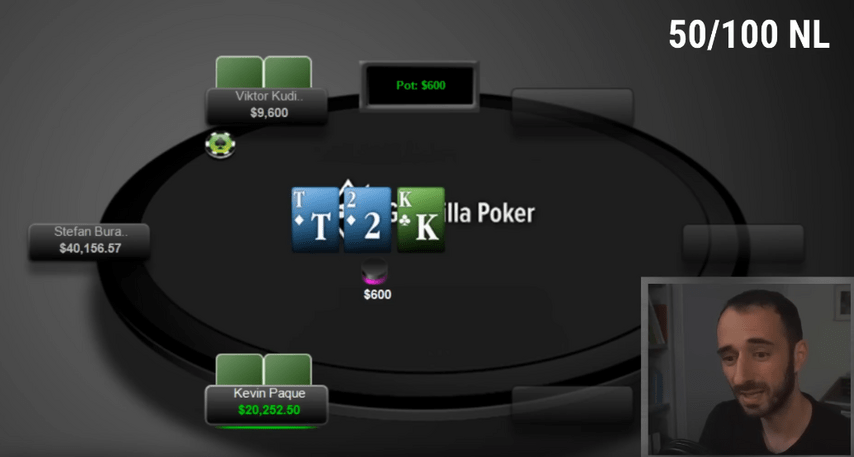
Good texture for the raiser with two broadway cards out there, although the small blind's calling range is noticeably stronger than the BB's.
Kevin checks, Viktor bets a third of the pot, presumably his entire range, and Kevin decides to call.
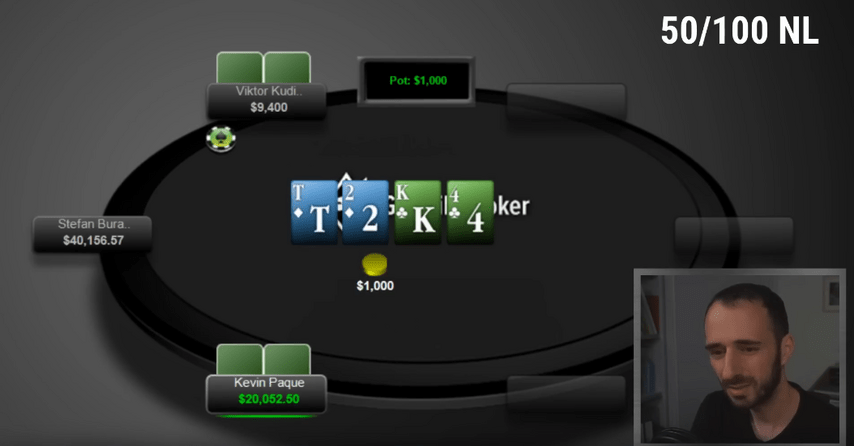
A four on the turn shouldn't help anyone. Kevin checks and Viktor bets a second two-pot barrel. Giant sizing! It is possible to calculate the size of the overbet so that we go all-in by betting the same percentage of the pot on the turn and river (this is called geometric sizing), but after 200% of the pot on the turn, the all-in on the river will be equal to about 150% of the pot. This is very unusual, real gangsta poker!
I consider Viktor a GTO machine. Since he plays like this, it means that it is appropriate here. In some spots, it's actually advantageous for us to deviate from geometric sizing and over-bet on the turn to make it harder for our opponent to realize equity. There are two flush draws on the board here, and there are a huge number of flush draw hands in the players' ranges. The only way to put pressure on them is with tough overbets. What should Kevin do, say, with ? Against a normal sizing, this would be a simple call. You can choose a sizing that will make less likely to call. In general, a rare line, a rare situation, it is very interesting to encounter it.
Kevin calls. In his range is a pair+flush draw, some top pairs (not all top pairs are eligible to call the overbet), some nut flush draws, maybe a combo draw.
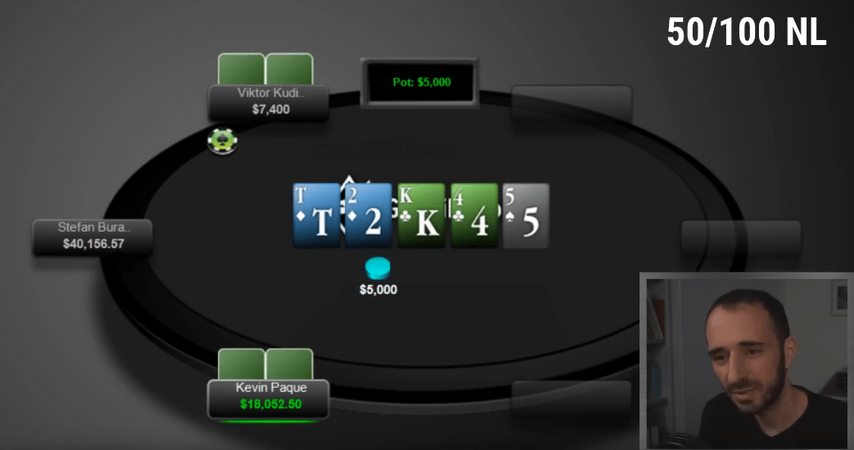
Five on the river improves with Viktor and Kevin, if he has this hand in his range, which is quite possible.
Kevin checks. Viktor decides to go all-in. How strong does his hand need to be to get all in for value? If we go back to the flop, Viktor's small sizing should in theory force Kevin to check-raise all or nearly all hands two pair or better. 4s and 5s on the turn and river are unlikely to improve the small blind's calling range often since he can't call preflop with T4s, T5s, K4s, K5s. This means that Viktor has the right to play the stack very wide, from And . Maybe even , but it seems to me that prefers lines with less aggressive sizings. Well, you can choose bluffs according to your taste, but missed flush draws should go somewhere at the bottom of the list.
Kevin calls.
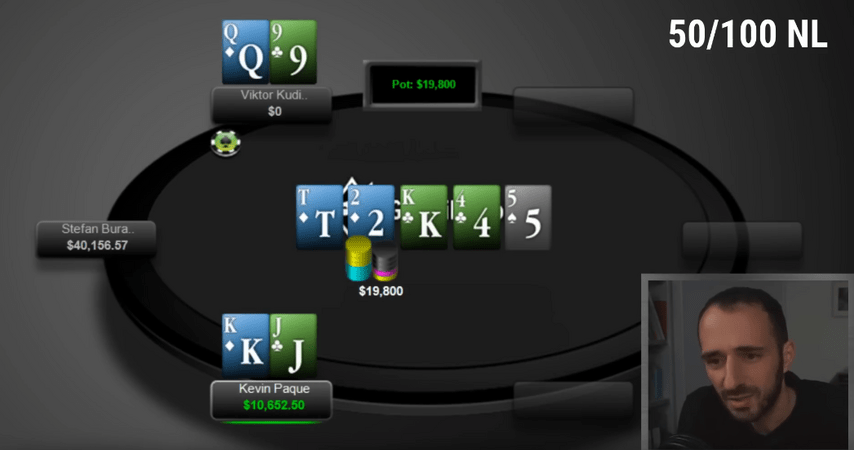
KJo played very standard – default call preflop and flop, almost certainly – on the turn, although to have is not very nice, and on the river, it's a bluff catcher, like all our hands with a king or a ten. Having diamonds and clubs is a big plus, as Villain should give up more often with missed flush draws and bluff with other suits.
Viktor shows Q9o with flush draw-blocking suits. The GTO-machine has a hand, bluffing with what at first glance contradicts theoretical principles. Right? Well, let's just say that I wouldn't dare to bet against Viktor's knowledge, but it seems to me that in this hand he was counting on overfolds from Kevin. Intuitively, his hand doesn't seem like the best hand to bluff.
Before we move on to the next hand, I want to add that high stakes, players have a knack for perfectly considering effective stacks when choosing sizings. Viktor was caught bluffing this hand, but he will play for value the same way – and get paid regularly. Sometimes you can increase your win rate solely through proper sizing without changing anything in your ranges.
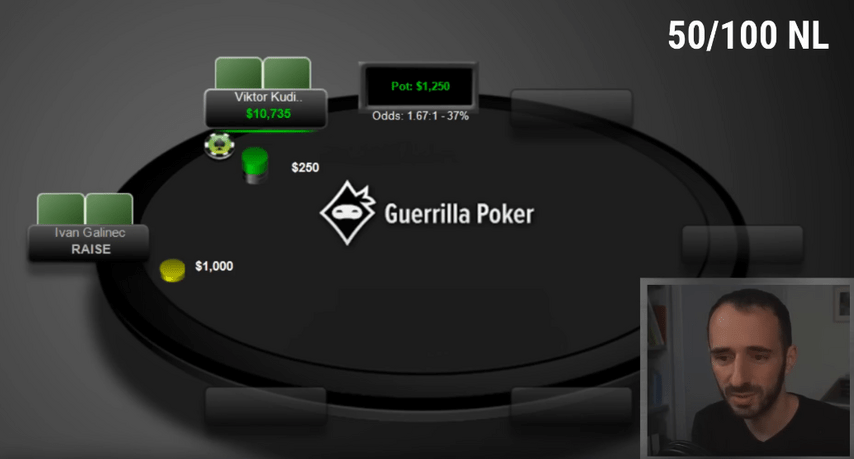
Heads-up against Ivan. Viktor raises to 2.5bb, gets the standard heads-up reraise of 4x to 10bb, and calls.
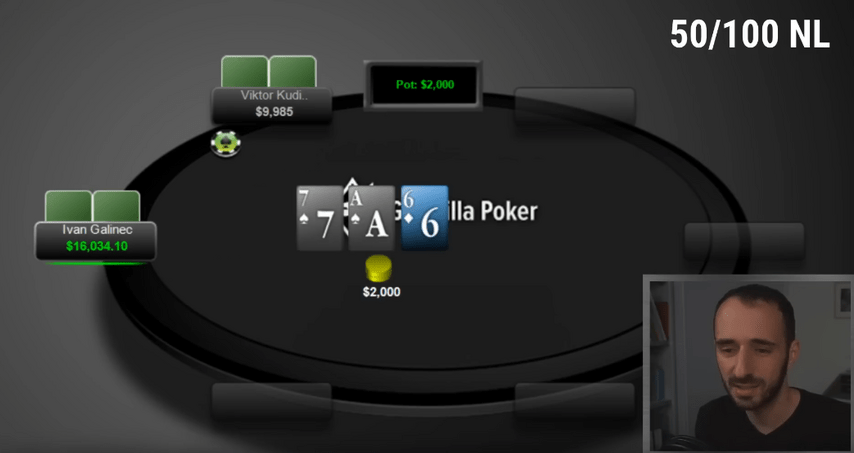
Each texture with an ace is unique in its own way. They should not be taken as just "ace-high flop", it is necessary to take into account how well other cards fit the ranges of the players in the hand. The first thing that comes to my mind is that there are all combinations in the 3-bet raise-call range , , A7s and A6s. This seems to be one of the worst ace boards for the 3-bettor. The flop flush draw also always plays against the aggressor, taking away some of the value from his strongest made hands. Ivan's strongest top pairs – and , and for them, this is one of the worst ace textures.
I'm sure there's no question of any c-bet with the whole range. A very volatile, very dynamic board where you have to mix bet and check.
Both players check the flop.
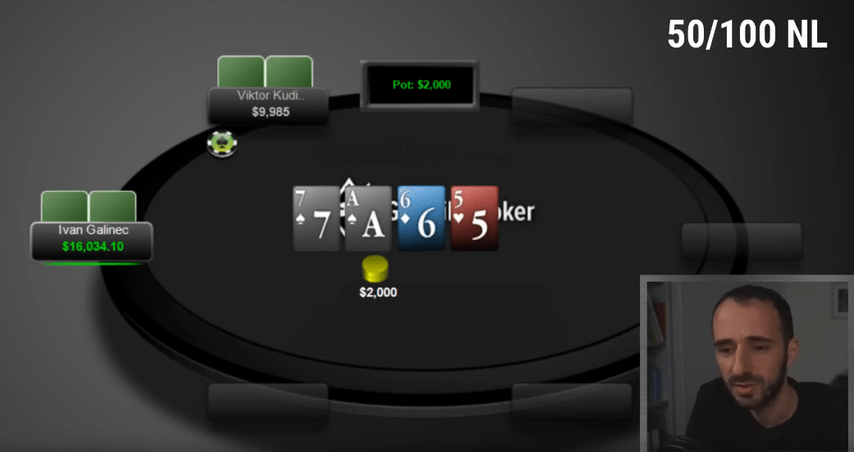
When players' ranges are asymmetrical, different cards help them in different ways. As a rule, high cards are good for the aggressor, while low and medium cards are good for the defender. The five plays into the hands of Viktor, in whose range there are , A5s, 65s and 75s. Ivan can't go overboard with aggression on this card, and he checks. Viktor checks next.
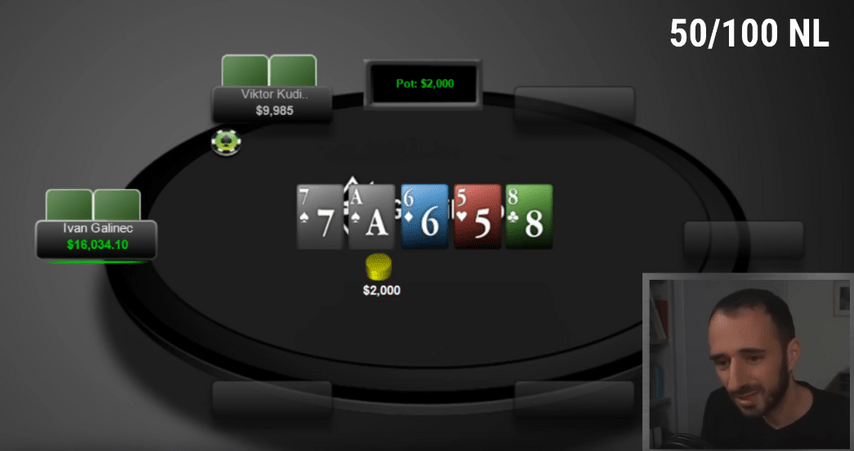
On the river, Ivan checks for the third time and Viktor goes all-in for five times the pot. It's not often that we see overbets like this! The board is very good for Viktor, and Ivan checks all the streets, but five times the pot?!
To begin with, let's ask ourselves about the value threshold. Can he have the low part of the straight? The top part of it? Or strictly the nuts ? Without looking at the computer, I'm not ready to give the right answer. We'll have to guess, trusting our intuition, but that's how we play poker most of the time.
Considering the cards that came out are very good for Viktor's range, I think Ivan should check most of his strong hands, including and , preparing to check-raise with them. When one side has hands to check-raise, the solver stops offering huge overbets. I think that in theory, the Viktor line does not exist, you need to choose a different sizing.
So with that in mind, what hands does he do this with? I think nine will be enough. If, for some reason, he definitely needs , the choice of sizing is definitely wrong. But if a nine is enough... the devil knows, maybe his line is also bad. After all, he's the GTO machine, not me.
Ivan calls.
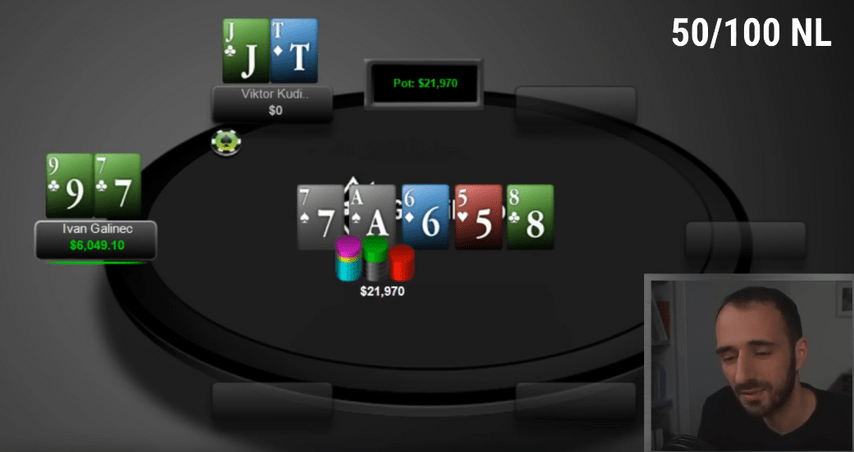
As usual, let's go through the players' decisions from preflop to the river. Let's start with Ivan. Light 3-bet, light checks on the flop and turn. Checking the river isn't that easy, but it makes sense because the texture for his range is terrible and you have to check very often. I won't be surprised if you just need to check the entire range, shifting all the responsibility for betting into the pot on the opponent. Good hand from Ivan.
Victor shows JTo – a great choice for a gangster bluff. Preflop is completely standard. Bluffing on the flop or turn might be beneficial, but you don't have to. Personally, I don't see much value in JTo's hand for bluffing these streets. The goal of bluffing on A-High boards is often to get and , against which JTo is completely crushed. Although sometimes you can make them pay, why not, if only not too often.
Finally, the river... The presence of a ten makes the hand suitable for an all-in. Bluffing with a pair, perhaps, is not worth it, otherwise, the face value of the second card does not matter. So his hand seems to me quite suitable for such a move. If such a sizing exists in theory – and Viktor probably knows better – then well played. Probably, it is necessary to apply this line not always, but with balance, but Viktor probably does not overdo it with it either.
If in the previous hand, his bluff seemed to me rather exploitative, then here he looks quite competent and theoretical. His hand has all the necessary characteristics. Perhaps people with solvers will correct me. However, for a practical game, the solution looks quite logical and therefore should not be a mistake.
I think from these two hands we can judge how polished Viktor Kudinov's skill is, how easily he is ready to risk his stack when circumstances require it, and how good he is at finding super-aggressive lines in not the most trivial situations.
